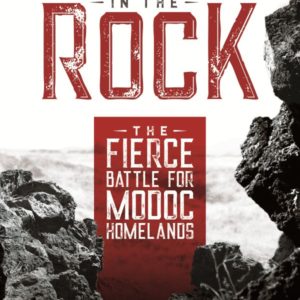What Do Hong Kong and Seattle’s Central Area Have in Common?
I had just finished watching “On the Brink,” an hour long documentary on KCTS about Seattle’s Central Area, when I turned to this article on the protests in Hong Kong.
What the Christian Science Monitor article on Hong Kong argues is that the protests there aren’t just about “freedom” as an abstract idea or even a set of civl rights. What’s really going on is that the unique culture of Hong Kong is being overwhelmed by the economic and political force of mainland China. Here’s a bit from that piece:
“Millions of mainlanders, some with multiple-entry permits, take advantage of Hong Kong’s tax-free status and lower prices to snap up medicine, cosmetics, infant formula, and other goods with brand names trusted by mainland consumers. Many of them, known as ‘parallel traders,’ repackage the goods in small parcels to avoid taxes and resell them for a profit across the border.
“The voracious appetite for such products stems partly from the mainland’s problem with counterfeit goods. ‘They don’t trust the Chinese formula. Many things in their country are fake,’ says one Hong Kong pharmacist. She describes the industrious traders derisively as working ‘like so many ants, [to] move things from place to place.'”
Meanwhile, Seattle’s Central Area has gone from what was a rich, African-American cultural enclave that spawned all sorts of creativity and contributions in the arts and athletics, business and culture to a hollowed-out gentrified neighborhood. Today, only 18% of the Central Area population is African-American.
The Central Area had been a place where Seattle’s African-Americans built a culture and a community. At the center of it were the churches. Key, as well, were African-American owned businesses that catered to the tastes and needs of an African-American clientele. The Central Area was a healthy, intact culture . . . until it wasn’t. And the change has been a good deal like what the shift in Hong Kong, though on a much larger scale there. “Like so many ants . . .”
Before anyone quite knew what was happening, it had happened. The Central District, as a vital cultural enclave was gone.
Hong Kong is resisting the mainland Chinese tide in an effort to maintain its own unique culture, which includes a much greater degree of political freedom than is enjoyed in mainland China. More on Hong Kong:
“The brisk trade (see above), while profitable for some, has caused rising prices and shortages in baby formula and other key goods for Hong Kongers. It has also driven out small businesses and raised rents as large retailers move in, leading to protests by local people like Mr. Chen.
“The border scene is emblematic of the social, economic, and cultural effects of a growing influx into Hong Kong of mainland Chinese people, companies, and investment since China regained sovereignty over the British colony in 1997. As China has stepped up efforts to integrate Hong Kong with the mainland, Hong Kongers say they feel threatened, facing what they describe as pressure on all fronts.”
 Throughout the fall I’ve been reading in Northwest Indian history, courtesy of my book group. Our latest selection was Spirit in the Rock: The Modoc Indian War by Jim Compton (former KING reporter, City Council member, now deceased). These stories of Native Americans in the Northwest are depressingly similar. Mostly the Indians try to accommodate white settlement, asking for some of their ancestral land and peaceful co-existence. Then some spark lights a fire, and this becomes a sufficient excuse for all-out war on Indians and displacement of survivors to the underbelly of Oklahoma. These stories are all about the destruction of sub-cultures and intact communities in the the interest of 1) money and 2) national destiny/ homogenization.
Throughout the fall I’ve been reading in Northwest Indian history, courtesy of my book group. Our latest selection was Spirit in the Rock: The Modoc Indian War by Jim Compton (former KING reporter, City Council member, now deceased). These stories of Native Americans in the Northwest are depressingly similar. Mostly the Indians try to accommodate white settlement, asking for some of their ancestral land and peaceful co-existence. Then some spark lights a fire, and this becomes a sufficient excuse for all-out war on Indians and displacement of survivors to the underbelly of Oklahoma. These stories are all about the destruction of sub-cultures and intact communities in the the interest of 1) money and 2) national destiny/ homogenization.
It would appear that China with its policies toward Hong Kong, Tibet and Muslims is pretty much on the path of the US between 1860 and 1890 with respect to Native Americans. Neither can tolerate viable sub-cultures.
Nothing so gross has been stated in Seattle with respect to the Central Area, but the effect is pretty much the same. A viable, healthy community that created a sense of belonging, security and foundation from which to build has been swept away.
How does something like “a sense of community” stand a chance against the almighty dollar? Is there any way to attach value to healthy community over and against development? Can majority cultures tolerate and allow minority cultures to exist and to thrive?
In the atrophy of Seattle’s Central Area not just its African-American residents and former residents have lost something. We have all lost something. Seattle is the poorer for the gentrification of the Central District.
![Anthony B. Robinson [logo]](https://www.anthonybrobinson.com/wp-content/themes/anthonybrobinson/images/logo.png)
![Anthony B. Robinson [logo]](https://www.anthonybrobinson.com/wp-content/themes/anthonybrobinson/images/logo-print.png)